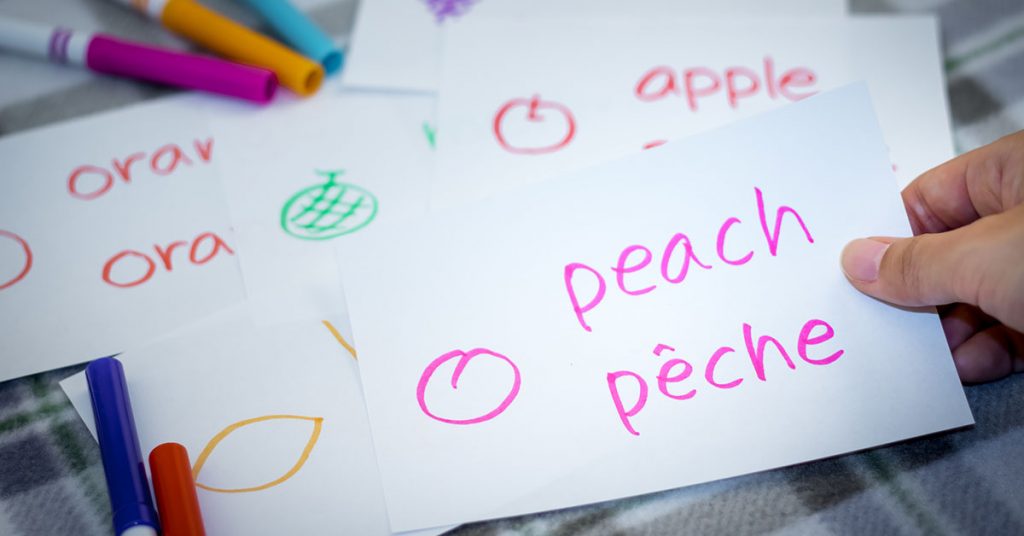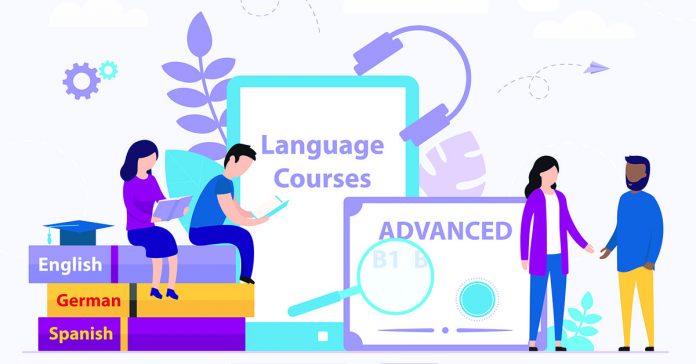There are plenty of different ways to learn a language, but not all of them will teach you how to understand and speak it effectively. There are also a whole range of different approaches to learning a language. Each method has its proponents. Each method also comes with a range of online guides. With so many opinions available, it can be difficult to find the one that suits you best. With that in mind, I have written this definitive guide to learning a foreign language. It distills all the different approaches and opinions into one single place. That way, you can focus on getting the most out of your language learning.
Think of it like learning how to drive. You can study the layout and functions of a car all you want, but you’ll never learn how to actually drive until you start spending time behind the wheel. When you’re learning a second language, you’ll need to spend time having real conversations with real people, as well as studying the theory behind what you’re saying. That mix of practical experience and formal learning is probably the most important secret to effective language-learning.
Most guides talk about the most obvious aspects of learning a new language. There are some useful ones out there, that give you some top tips. They tell you to start with basic vocabulary, write down practice sentences, and study in groups rather than by yourself. This kind of thing is definitely helpful, but you can find that kind of advice just about anywhere. In this definitive guide, you’ll read about the fundamentals, plus some additional techniques that don’t get talked about as much. This is based on real-life experiences of people who’ve successfully learned to speak a second language.
To help you jump quickly to the section that is most important to you, here are links to the main sections:
1. How to Start the Learning Process
2. Develop a Language-learning Routine
3. Focus on Vocabulary You Will Actually Use
4. Don’t Be Afraid to Make Mistakes
6. Don’t Be Afraid to Make Even More Mistakes
7. Don’t Restrict Your Learning to the Grammar Books
8. Get Used to Talking in Your Target Language
9. Online Language Learning Resources
11. What’s the Best Kind of Language Learning Practice?
Above all, don’t forget that learning a foreign language is not an easy thing to do. It requires a whole mix of different qualities to secure success. Discipline is certainly near the top of that list, daily learning and practice is a prerequisite for success. Motivation is another key requirement. There will be days when you just feel like throwing in the towel and doing something that is a little less arduous in your free time. There will be times when you feel that you will simply never achieve your goal. Language-learning is not your thing, and something that should be left to the experts. If you focus on the points laid out in this definitive guide to learning a foreign language, you will learn how to avoid such pitfalls.
1. How to Start the Learning Process

It’s possible to invent your own curriculum from scratch. However, that doesn’t really give you an advantage over simply getting a beginner-level textbook or internet-based course to start out with. Look for a curriculum that helps you learn what you’ll need to know for basic conversations. Taking courses that teach you about cooking terms or different names for royalty won’t help you much in the early stages.
There are lots of different language-learning tools out there. Lots of people claim to have written the definitive guide to learning a foreign language. There are the classic tools that you’ll remember from school, such as textbooks, vocabulary lists and grammar books. Over the last few years, extensive online resources have also become available. This includes entire courses, such as Babbel and Rosetta Stone, as well as more focused apps that deal with a particular part of the process, such as vocabulary.
Just like when you learned to speak your first language, try to turn your new vocabulary into sentences as soon as you can. You retain knowledge best when you use it. Even if it’s just saying short sentences in Italian to confuse a friend, you should start talking!
While getting a decent curriculum is important at the beginning, so is finding someone who can help you use your new language skills. It can be a teacher, a friend, or a native speaker you’ve gotten in touch with for just that purpose. Finding someone to help you get a feel for how the language works in real life is essential.
2. Develop a Language-learning Routine

As with everything that involves concentration and mental effort, you have to get into a routine that works for you. If you’re learning a language from home, there are plenty of ways to optimize your learning routine. This is particularly important when it comes to choosing a place to study and learn you target language. Find a quiet place that is free from disturbances. If you have kids that are likely to disrupt your routine, concentrate your language-learning into periods when they are out of the house.
If you’re working full-time and trying to squeeze language-learning in during the evening, find a quiet room somewhere in the house where you won’t be disturbed. Perhaps there’s a way to squeeze your language-learning into to your daily commute. If you travel to work on public transport, take your headphones with you and listen to a language lesson while you’re on the bus or train. There are also plenty of podcasts available for that kind of listening. If you travel by car, play your lessons over the car’s audio system. Those long journeys to and from work will no longer be a waste of time!
This daily routine can also help you memorise words more efficiently. There are no fixed rules on how many words you need to learn each day. Obviously the larger your vocabulary, the proficient you will be in your target language. If you review word lists each day as part of your language-learning routine, you’ll start to feel at home with your new language much more quickly.
Ultimately, though, there is no single answer to this one. To a large extent, everyone has to find the route to learning a foreign language that works for them. No single language-learning routine will work for everyone. It’s a question of finding what works best for you.
3. Focus on Vocabulary You Will Actually Use

Finding the definitive guide to learning a foreign language is never easy. Some language courses are designed to be a part of a child’s school curriculum. The lessons revolve around things like animals, types of clothing, or sports. This will end up being a part of your vocabulary eventually, but it’s not likely that you’ll want to talk about the clothes you’ve got on in your early conversations.
Instead, think of what you’d say in English if you were introducing yourself to a stranger. You’d probably want to tell them about things like what you do for a living, and where you’re from. If you’re single, you could discuss parents or siblings. By focusing on words that you’ll actually be using from the start of your language-learning journey, your motivation will receive a massive boost. You’ll very quickly start to see that the words on your vocabulary lists are cropping up in everyday conversations. This will be very important in helping you learn foreign words more quickly.
If you feel like your lesson plan has you working on material that just isn’t relevant, skip to the next part. For instance, you probably won’t need to know world capitals or furniture names – prioritize what you learn.
As you learn vocabulary, ask yourself if you’ll be able to use the words in everyday conversation. If you decide that you won’t need it anytime soon, don’t feel like you’re cheating; whatever you skip in the beginning will come back up in its own time.
Conversations with people you’ve just met usually involve just a few common questions. If you learn these questions and their answers, then you’ll be ready for your first conversation!
Prepare for your first conversation by writing down information about yourself that’s likely to come up when you introduce yourself. You’ll probably cover most of these questions every time you meet someone, so it’ll definitely be coming in handy.
Make flashcards with the questions and answers to drill yourself, and practice saying each one out loud. You could even get someone to read out the questions for you. You can get used to listening to someone else ask you questions in another language. A good beginner’s textbook will help you learn these phrases. This will give you the vocabulary you need for very basic conversations. This will also be a great way to memorise vocabulary.
4. Don’t Be Afraid to Make Mistakes
Sometimes the hardest part of learning a new language is talking when you know you’re going to make mistakes. Maybe you just simply forget a word, or you confidently say something that’s actually completely wrong. It’s common to have trouble understanding native speakers at first because they talk so fast. A lot of the time, you’ll end up just standing there looking blank. If they try to help you out by speaking English, it’s up to you to make the switch back to the other language. It’s best to get used to the idea that most early conversations won’t go smoothly. Fortunately, there are a few simple things you can do to make up for it.

If you can explain at the beginning of the conversation that you’re still learning the language and can’t speak very well yet, the expectations will be pretty low. Mistakes won’t really stand out as much, but everything you say correctly will be quite an accomplishment. The focus will be on what you can say, rather than what you can’t say. The person you’re talking with will recognize the effort you’re making and maybe even help you along as well. This will ease you path to learning a foreign language.
It’s also useful to know how to ask someone to speak more slowly, request that they repeat what they just said, or check that what you just said was correct. This will reinforce the right way of saying things, and help you avoid future mistakes.
5. Learn Some ‘Filler Words’
Pay attention next time you have a conversation in English, and notice how many “filler words” you really use. Nobody consistently talks without pausing, correcting themselves, or making clarifications to what they just said. Learning some of these filler words will make your conversation seem more natural and confident. You’re going to have to start out speaking slowly, and it’ll be a lot less awkward if you learn to add a few simple words.
Most languages have the equivalents of “I mean”, “right”, “you know”, and “actually”, as well as the typical “ahs” and “ums” that fill in time spent searching for the right word. If you didn’t know any of these words in the second language, you’d have to say “I live in Washington, but I grew up in Colorado. Do you live in Spain?”. But if you’d already prepared yourself, it would be more like “I live in Washington, but I actually grew up in Colorado. You live in Spain, right?”. The first sentence gets the job done, but it’s pretty boring and just doesn’t sound right. The second sentence has a much better flow, and sounds more genuine as well.
Make sure you learn these along with regular vocabulary and phrases. Pay attention to how your language partner uses them during your conversations. Try using them when you practice so you’ll remember them later. You could even set a goal for yourself to use a certain number of “filler words” in your next practice conversation. Write down a list of the ones you know and try to use at least half of them one way or another. You’ll be surprised at the difference it makes!
6. Don’t Be Afraid to Make Even More Mistakes
Making mistakes is so important it crops up twice in this guide to learning a foreign language! When you first start turning your vocabulary into sentences, you’ll most likely sound like a broken radio. You’ll be trying to remember the rules for where adjectives go in a sentence, what kind of article to use, and which conjugation you need. And of course this is all while trying to pronounce everything in a totally new accent. With so much to think about, mistakes are inevitable, so don’t freak out or get discouraged when they happen.
Whenever you say something incorrectly, don’t just plow through to the end and call it a day. If you do that, you’re just practicing the mistakes. You’re a lot more likely to keep making the same ones over and over. Instead, stop yourself and check on how you should have said it. Then say the sentence again, correctly this time. It may seem frustrating and slow at first, but you’ll actually improve faster overall with this technique. Just remember, if you keep your eyes on the goal, every mistake you make can be turned into an opportunity to learn and improve.
7. Don’t Restrict Your Learning to the Grammar Books

Some people try to perfect the technical side of a language before they actually go out and start speaking it, but that does not always produce the best results. You certainly need to understand the basics when it comes to grammar, but there’s more to learning a language than rules. You may find you spend a lot of time learning things that aren’t actually that useful once you start getting some practical experience. During a conversation with a native speaker, it’s common to hear “that’s the right way to say it, but nobody says it like that – this is how everybody actually says it”. Imagine if you heard that every time you opened your mouth! If you start learning organically right from the beginning, you’ll end up wasting a lot less time.
8. Get Used to Talking in Your Target Language
You’ve probably been waiting to hear it: practice makes perfect. You want to speak a second language, not just know it, right? This maxim is key to learning a foreign language. That means you’ll have to get in plenty of practice with speaking, not just learning. This can be the most intimidating part of the whole process – no surprise there. Striking up a conversation in a language you can barely even speak doesn’t sound fun. However, with the right kind of help, this can turn into your favorite part of the learning experience.
When you’re just starting out, you don’t necessarily need to talk with someone who grew up speaking the language. If your practice partner has learned your target language themselves, they’ll know exactly what you’re going through. They’ll be able to give you all kinds of advice from their own experience. Communication will be especially easy if you both share the same native language. This is the perfect opportunity to start gathering up everything you’ve learned so far, and start turning it into sentences.
If you’re a beginner and just want to get your toes wet, try finding a place where you can chat online. Writing out sentences, rather than speaking them, is so much easier when you’re just starting out. You can stop and think about which words to use, and even look them up in a dictionary. You’ll avoid that awkward feeling you’d get if you were saying it out loud.
9. Online Language Learning Resources

A simple search on Facebook will probably give you more options than you know what to do with. Perhaps the best news in this guide to learning a foreign language is that many of the best resources are right there in front of you. There are lots of language-based Facebooks groups, for example. These kinds of groups exist for most language learners, and you should have no trouble finding one that suits your needs. You can talk with both experts and beginners – asking questions, swapping tips, and adding to your expertise day by day. This is a great resource to use at any point during the learning process, since you’ll be connected with people at all different levels of fluency.
Instagram is also a great resource. Just from finding a few of the right types of account, this can be a great way to learn more about how your target language is used in everyday contexts. Look for language teachers who make posts in that language and interact with their followers through the comments. Finding these accounts is fairly easy, you can either search on google for something like “Italian teacher Instagram”, or look directly on the website using hashtags like “#learnrussian” or “#mandarinlessons”.
10. Listening and Reading

Practice is at the heart of this guide to learning a foreign language. Simply memorizing phrases won’t cut it. Eventually you’ll get to the point where you’ll want to experience real-life situations, and you’ll need to know the rhythm of the language. If you spend plenty of time reading materials in your target language, you’ll pick up all kinds of things without even realizing it. Then, when you’re in the middle of talking with someone, you’ll find yourself using new words and phrases without even trying. The same goes for listening.
This is one strategy that really pays off if you do it consistently. With all the digital media out there in every language imaginable, there are plenty of opportunities for you to engage in this type of passive learning. Once you think about it, you’ll realize just how easy it can be for you to work in some language learning on a daily basis!
For instance, think about how much time you spend on social media. You could take just 15 or 20 minutes per day to spend in a language-related Facebook group chat. Do you commute to work? Find some podcasts that you can listen to in whichever language you’re studying. Instead of watching television, spend some of that time viewing YouTube videos that are produced in your target language.
11. What’s the Best Kind of Language Learning Practice?
It all depends on what your preferences are. There are pros and cons to each one. If you’re talking face-to-face with them, you have the advantage of hearing the language spoken along with seeing how it relates to body language. For some people, it’s much easier to understand an unfamiliar language if they can see the face of the person speaking. However, if you don’t personally know someone who can help you out with this, you may have to end up paying a good amount of money for this kind of personalized help.
Getting practice help online, on the other hand, is usually both affordable and flexible. After all, I’m not targeting big budget learners with this guide to learning a foreign language! If you find someone to speak with online, you could have more options for casual help than if you’d hired a tutor. Depending on who you find to talk with, it could take the form of texts, phone or video calls. You might even end up meeting each other in person. It’s up to you, the main thing is that you get plenty of practice in.
12. Taking Language Notes

Throughout the language learning process, keep notes on anything and everything. Write down your mistakes, new words, slang terms, or words you just heard and need to look up later. This kind of laser-focus is key to learning a foreign language. During conversations with your practice partner or tutor, you can refer to whatever you’ve written down over the last few days and incorporate it into what you talk about. Just remember, the more work you put in at the beginning, the easier it gets later on.
If you’re in the beginning stages and you need conversation ideas, think about why you started learning the language in the first place. Was it for travel, to connect with friends or family…what direction should your vocabulary be going in? If it’s for travel, you’d want to dig into vocabulary related to transport, currency and numbers, accommodations, food, etc. If you wanted to talk with family members, learn words related to your own hobbies, interests, and personal history.
13. Things to Remember
Let’s bring all those lessons together then. This guide to learning a foreign language is described as definitive, after all. Here are the things that you really need to think about as you start you language learning journey.
First of all, don’t be afraid of mistakes. If your main goal is to just not make mistakes, you’ll fail immediately. You’ll end up making yourself tense and nervous every time you try to have a conversation. Instead, welcome every mistake as it comes! With every error you identify, you’ve found something you can do to make yourself better. Just be sure to make a note of it somehow, as often as you can.
Get into the habit of writing down any word or phrase you need to work on, go back over it on your own. Then see how much you’ve improved the next time you’re talking with someone. Research indicates that you’ll likely have to see or use a word 20 times in order to remember it. You won’t fix everything right away with this method, but you’ll definitely see rapid improvement.
This is why being able to talk in a learning setting is so important. Social situations are great for learning too. However, it’s not always the right time to ask everyone to slow down and help you understand something. When you’re in control of the flow of conversation and you can slow down when you need to, that’s when the magic happens. Your conversation partner can be right there with you to prompt or correct you. There’s no need to feel rushed. Regardless of the situation, remember that even if you can’t quite control how many mistakes there are, you can always control the impression you make. If you have a sense of humor about it, everyone else will too.
If you’ve enjoyed this guide to learning a foreign language, why not let me know about it. Leave a comment below to say which parts worked, and which didn’t.










